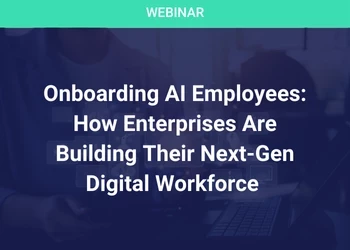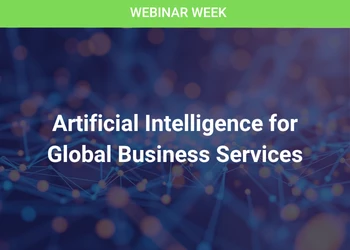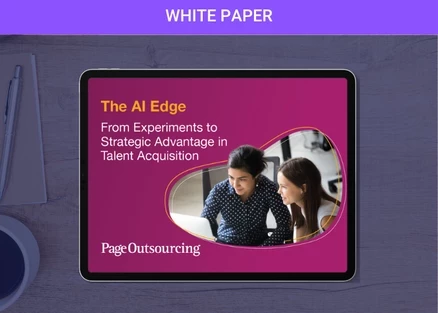Robotic Process Automation and AI in Shared Services
Add bookmark
Scaling up Artificial Intelligence
In today’s scenario, digital transformation’s radical effect is most strongly experienced in Shared Services organizations that are evolving at a rapid pace from process units to strategic drivers in creating business value. Organizations are aspiring to make themselves more efficient, reduce non value-add manual activities, and achieve high stakeholder satisfaction. This can be achieved by ensuring you are ready for next-level robotics that can reduce costs, boost productivity, and increase accuracy.
What is not yet clear is how next-level robotics can complement and enhance an existing RPA implementation to automate processes across a wider range of tasks.
My suggestion is that companies should consider emerging best practices to simplify implementation — and focus on fast wins.
One of the main benefits of RPA is that it enables employees to focus more on strategical and tactical support, and helps in working closely with stakeholders to offer solutions that meet business needs. Common results include a reduction in lead time and an improvement in data quality.
Organizations working towards a digital strategy can position Robotic Process Automation “as A tool “ – not THE tool.” It helps in improving employee productivity in tedious, repetitive, error-prone tasks, and frees up time for more tactical support.
Our best mantra has been to “do it small, do it fast” and streamline complex processes that help us align to our business goals.
Over the course of the journey there are numerous factors that drive a successful RPA implementation, such as:
- In-house domain knowledge
- Listing key requirements
- Effective collaboration and communication between SME, Developer and Team members
- Identifying the problem statement for automation need, especially heavy loaded jobs
- Identifying the key objective and constructing an extensive business case
- Potential to look at processes end-to-end
- Potential to scale RPA solutions
- Potential to modulate and change the solution real-time, at the front end
- Integrating RPA solution with overall HRIT landscape
- Selecting key people
- Organizing a feasibility analysis
- Following SITO steps: simplify, improve, transform, and optimize – which could lead to better customer experience, better quality, and more efficiency.
- Training and development
- Change Management
Delivering Business Value
The biggest business justification for automation in a Shared Services environment should not be not just keeping costs low but the ease automation offers in taking on wider tasks should also be considered.
Today’s market offers SSOs the chance to move from low-cost service provider to becoming an internal partner, and gradually maturing into a strategic entity. Organizations should be ready to take on more challenges, roles and responsibilities, and seek new skill areas (e.g., big data, analytics).
But where does Artificial Intelligence (AI) fit in?
AI is a different kettle of fish altogether. Bots are smart, but they are also inherently ‘dumb’ – meaning: They can only process or do the task they are trained for, again and again. Artificial Intelligence is way ‘‘smarter in many ways. It can interpret data itself, and can find patterns in a huge sea of data, which humans or bots could not.
The impressive thing about AI is that it can easily read and understand semi-structured or unstructured data and thus complement RPA systems in many ways. For example, an offer letter could be a semi-structured data – as the data in the document is standard. Unstructured data are like customer emails. Both data types, unstructured and structured, can easily be interpreted and understood by AI, which can extract structured data and file it in the system of record for parallel processing, either by a robot or an employee. Different algorithms allow AI to easily find clusters of same data without any complex programming language being involved.
To implement RPA and AI, SSOs should understand business impact and set objectives (e.g., customer satisfaction, reduced cost, or both). Then they need to re-evaluate at the process end-to-end to identify patterns. Once that is done, measurable steps should be taken to integrate the overall HRIT landscape, and develop solutions that are scalable and tailorable. Teams should work extensively with process experts at the solution stage to focus on project governance and plan for certain roadblocks or chokepoints where the RPA solution could bog down. Early identification of exceptions handling is a key to success. Also note:
- Ineffective change management and project design can lead to delays.
- An RPA COE made up of people who are responsible for efficiency programs is critical.
Implementing RPA and AI is not an easy journey, but Shared Service Organizations that embrace these technologies will be at the forefront of their field – and the best friends of their parent business.

























